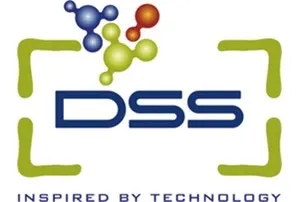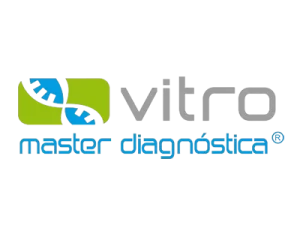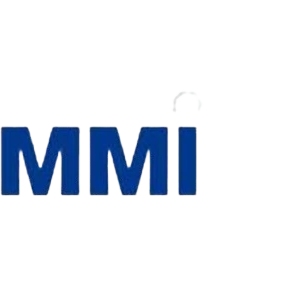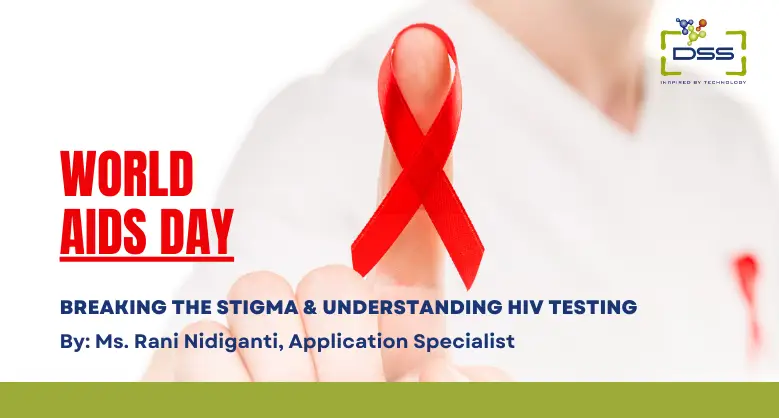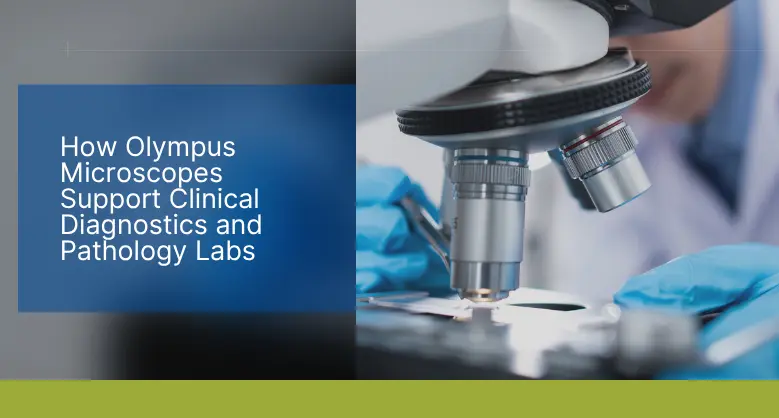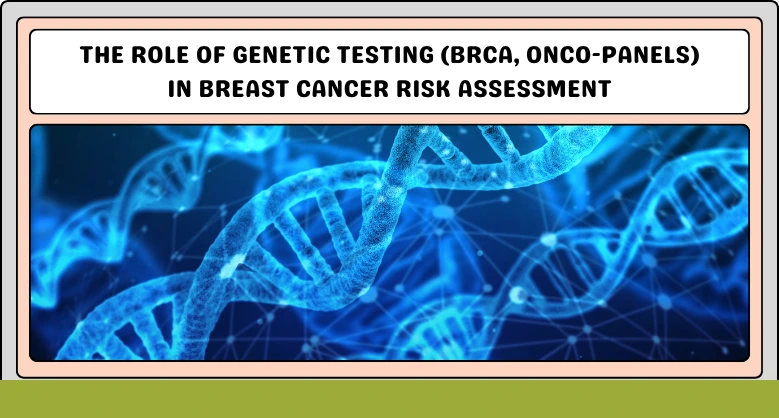DSS: Redefining Biotechnology & Life Science in India
- About Us
- Products & Services
PRODUCTS & SERVICES
-
Kits Reagents & Consumables
- Cytogenetics
- Dyes
- Fluorescence In Situ Hybridization (FISH)
- High-Performance Liquid Chromatography (HPLC)
- Histology
- Immuno Histo Chemistry (IHC)
- IVF Consumables
- Molecular Pathology & Diagnostics
- Multiplex Ligation-Dependent Probe Amplification (MLPA)
- Nucleic Acid Extraction
- PharmDx
- Real Time PCR
- Special Stains
- Instruments
- Software
- Accessories
- Advanced Material
-
Kits Reagents & Consumables
- Applications & Specialities
All Applications & Specialities
- Brands
- Contact Us
-

-
 0
0
- ☰
- About Us
- Products & Services
-
Kits Reagents & Consumables
- Cytogenetics
- Dyes
- Fluorescence In Situ Hybridization (FISH)
- High-Performance Liquid Chromatography (HPLC)
- Histology
- Immuno Histo Chemistry (IHC)
- IVF Consumables
- Molecular Pathology & Diagnostics
- Multiplex Ligation-Dependent Probe Amplification (MLPA)
- Nucleic Acid Extraction
- PharmDx
- Real Time PCR
- Special Stains
- Instruments
- Software
- Accessories
- Advanced Material
-
Kits Reagents & Consumables
- Applications & Specialities
- Brands
- Brand - Life Sciences
- 3i
- ABBERIOR INSTRUMENTS
- Abbott Molecular
- ADS Biotec
- APPLIED SPECTRAL IMAGING
- BioAir Tecnilabo
- DAKO (AGILENT)
- Eden Tech
- Elveflow
- ENTROGEN
- EUROCLONE
- EVIDENT
- Genea
- Hamamatsu Photonics
- Invivoscribe
- MASTER DIAGNOSTICA
- MBF BIOSCIENCE
- Medical Tek Co. Ltd
- MILESTONE MED SRL
- Molecular Machines & Industries
- MRC HOLLAND
- NeoDx
- Onward Assist
- Profound
- SCIENTIFICA
- SpaceGen
- Seqlo
- µCyte
- Brand - Industrial
- Brand - Life Sciences
- News & Events
- Career
- Contact Us
- Testimonial
- Blogs
- R&D
- CSR
- Press Release

Single-Cell Sequencing: Unveiling Tumor Heterogeneity for Precision Oncology
BY DSS Imagetech Pvt Ltd 26th May 2025
A jump from 5% to 29.6% survival rate means everything to families dealing with advanced lung cancer. This dramatic improvement in patient outcomes stems from matching the right treatments to each case.Single-cell profiling plays a game-changing role in modern cancer care that makes this possible.
Traditional ways of analyzing cancer have precise limits. Tumor samples typically show only 60-70% purity, which leaves gaps in our understanding of cancer’s complexity. Single-cell sequencing technologies have become cheaper and more powerful. Scientists can now learn about different types of lung cancer cells and how they behave. This technology helps map the complex interactions between cancer and immune cells. The results explain why treatments work for some patients but not others.
Single-cell sequencing is changing our grasp of cancer’s diversity and shaping the future of precision oncology. The technology finds applications in genomics, transcriptomics, and proteomics. These advances help doctors make better treatment decisions for their patients.
The Evolution of Cancer Genomics
Cancer genomics has seen remarkable progress in the last decade. The field has moved from a broad, population-level view to a detailed, cell-by-cell analysis that reveals tumors’ true complexity.
From bulk sequencing to single-cell resolution
Traditional bulk sequencing provided only an averaged signal across thousands of cells when it first appeared. This approach masked vital differences between individual cells and blended diverse cell populations into a single profile. Scientists’ understanding of cancer genomics remained limited to composite snapshots that often missed rare cell types and tumor sample variations before 2009.
Tang and colleagues developed the first high-throughput single-cell transcriptomic sequencing in 2009. Navin’s trailblazing work in single-cell DNA sequencing followed in 2011. This transformation allowed researchers to uncover the true diversity within tumors that bulk approaches had hidden. Scientists could now analyze each “fruit” individually instead of studying a “fruit smoothie” of blended cellular information to identify specific targets in particular cell types.
Key technological breakthroughs
Several critical advances have made single-cell technologies available to more researchers. The first single-cell studies could sequence just a few cells. The development of high-throughput systems changed everything. These systems include nanowells, microdroplets, and microfluidic platforms that enable parallel sequencing of thousands of cells.
Sequencing costs dropped from about $1 million per genome in 2007 to around $600 today. This reduction has made large-scale single-cell profiling more available. State-of-the-art whole-genome amplification (WGA) and whole-transcriptome amplification (WTA) chemistries have substantially improved data quality. Unique molecular identifiers (UMIs) have enhanced reproducibility.
How single-cell sequencing works
Single-cell sequencing starts with isolating individual cells from samples. Scientists use techniques like fluorescence-activated cell sorting (FACS) or droplet-based systems such as the 10x Genomics Chromium platform. These systems capture individual cells in nanoliter-sized droplets with barcoded beads. This process allows scientists to trace transcripts back to their original cells.
The next step involves cell lysis to extract nucleic acids. RNA sequencing requires converting extracted RNA into complementary DNA (cDNA). Scientists use reverse transcriptase and amplification through PCR-based approaches like Smart-seq2 or in vitro transcription methods. Quality control plays a crucial role throughout this process to prevent artifacts and ensure reliable results.
Scientists sequence the resulting libraries using platforms like Illumina’s sequencing-by-synthesis or newer long-read technologies from Oxford Nanopore and PacBio. The data reveals each cell’s unique genomic, transcriptomic, or epigenomic profiles.
Mapping Tumor Heterogeneity at Cellular Level
Cancer treatment faces one of its biggest challenges in tumor heterogeneity. Single-cell profiling has revealed cancer’s true diversity. What scientists once thought was a uniform disease has multiple distinct cell populations, each with unique molecular signatures.
Identifying diverse lung cancer cell types
Single-cell RNA sequencing has revealed remarkable diversity in lung tumors. Scientists have found clear differences between lung adenocarcinoma (LUAD) and squamous cell carcinoma (LUSC) patients. LUSC patients show much higher clonality than LUAD patients, which points to greater intertumor differences. Research teams have classified cancer cells into five distinct subtypes based on marker gene expression. These include CDKN2A, SOX2, CXCL1, LAMC2, and proliferating cancer cells. Some patients’ cancer cells show an unexpected trait— they express markers for multiple lung cancer subtypes at once. These subtypes include adenocarcinoma, squamous cell carcinoma, and neuroendocrine tumors. Scientists call these “mixed-lineage tumor cells.”
Genetic variations within a single tumor
Individual tumors harbor an amazingly complex genetic landscape. Complete genomic analysis shows that all but one of these tumors contain at least one genetically distinct subclone. These subclones keep evolving in patterns that help the tumor survive. Scientists found over 100 million coding mutations in a single unremarkable hepatocellular carcinoma. Yet studies show that all metastases in each patient typically share the most important driver mutations. This finding suggests that targeted therapy aimed at these shared mutations could help control metastatic disease.
Epigenetic differences between cancer cells
Epigenetic differences add another layer to tumor heterogeneity. Cancer cells’ DNA shows widespread hypomethylation throughout their genome, which activates genes involved in cell growth. Specific regions often become hypermethylated, which silences tumor suppressor genes. These epigenetic changes occur more often than gene mutations in human tumors. On top of that, histone modifications vary between cancer subpopulations. Stem-like and non-stem-like cancer cells display different patterns of histone marks such as H3K27me3. These differences change their behavior and response to treatment fundamentally.
Single Cell Immune Profiling in the Tumor Microenvironment
Scientists can now learn about cancer progression and treatment resistance by examining immune cells in the tumor microenvironment (TME). Single-cell immune profiling helps them examine this complex system with remarkable detail.
Characterizing immune cell populations
Cancer types show dramatic variations in immune cell infiltration, which creates unique cellular environments. Research on mouse models shows high immune cell infiltration in MC38 colon and KPCY pancreatic tumors (70% and 69%). Breast cancer models show much lower infiltration at 38%. The makeup of these infiltrates is also different. Brain metastases from melanoma contain more monocytes, microglia, and CD8+ T cells compared to breast or lung cancers. These immune system differences explain why melanoma responds better to immune checkpoint blockade treatments.
T-cell states and exhaustion patterns
T cells in tumors follow a path from stem-like precursors to completely exhausted cells. The main exhaustion markers include:
- PD-1, TIM-3, and CTLA-4 (inhibitory receptors)
- CXCL13 (chemokine linked to dysfunctional state)
- TOX (a transcription factor that programs exhaustion)
Research shows that exhausted CD8+ T cells, especially those with CXCL13, often multiply the most. This suggests they can identify tumor antigens even when they don’t work properly. Tumor environments with exhausted T cells show different immune escape mechanisms compared to those without exhaustion signs.
Tumor-immune cell interactions
The way immune cells position themselves affects cancer outcomes. Researchers used permutation tests to measure cell-cell co-location. They found brain metastases have stronger heterotypic cellular interactions than glioblastoma, even though they share the same tissue environment. Clear-cell renal carcinoma patients have shorter survival times when CD163+ M2-polarized macrophages cluster with CD8+ T cells at the tumor-stromal boundary. This clustering also increases T-cell exhaustion. Single-cell technologies have shown specialized communication networks. One example is how follicular helper T cells guide B cell responses through CXCL13-CXCR5, which affects patient outcomes.
Single-cell immune profiling shows how the immune system works inside tumors. This knowledge helps scientists develop better cancer immunotherapies.
Translating Single-Cell Data into Treatment Decisions
Single-cell profiling stands as one of the main pillars of modern precision medicine. Scientists now make use of information from single-cell studies to make ground clinical decisions about complex tumor treatments.
Predicting drug response and resistance
Standard bulk analysis methods often miss vital cell-state vulnerabilities that cause treatment failures. Single-cell technologies can spot rare cell populations in temporary drug-resistant states. These populations remain almost impossible to find through conventional methods. Tools like scDEAL now connect drug-related bulk RNA-seq with single-cell data. This helps predict treatment responses at single-cell resolution. The method proved highly accurate in predicting cell-type drug responses from six standard datasets.
DREEP (Drug Response Estimation from single-cell Expression Profiles) examines over 200 cancer cell lines from 22 cancer types. This tool uses pharmacogenomic screens to find drug vulnerabilities in diverse tumors. Doctors can now predict which cell groups might resist treatment. A study showed this capability when single-cell drug response (scDR) prediction found inherent resistant groups in melanoma cells treated with dabrafenib.
Identifying targets for combination therapy
Tumors contain at least one genetically distinct subclone 95% of the time. This reality makes combination therapies crucial. Clinical trials now focus heavily on combination approaches. The use of single treatments has dropped from 70% to 20-30% over the last several years. These combinations follow two main strategies:
- Mechanism-based combinations target different domains of the same protein (like HER2) or different points in the same pathway (RAF plus MEK inhibitors)
- Microenvironment-modulating combinations boost immunotherapy success by improving the tumor microenvironment
Single-cell studies show that PD-1/PD-L1 inhibitors work better with agents that target other immune checkpoints. VEGF inhibitors also help by reprogramming immunosuppressive environments.
Conclusion
Single-cell sequencing has revolutionized our understanding of cancer’s complexity. Traditional bulk sequencing methods barely scratched the surface, but single-cell analysis now unveils the complete picture of tumor heterogeneity and immune system interactions.
Scientists can now see remarkable benefits from this technology. They can spot specific cell populations that might resist treatment, track complex immune responses, and create better combination therapies. Patient survival rates have improved significantly—the numbers jumped from 5% to 29.6% in advanced lung cancer cases.
Cancer treatment’s success depends on understanding each cell within tumors rather than viewing them as whole entities. This deeper insight brings us closer to changing many cancers from terminal diagnoses into conditions we can manage effectively.
Latest Articles
World AIDS Day: Breaking the Stigma and Understanding HIV Testing
BY DSS Imagetech Pvt Ltd December 1, 2025
Worlds AIDS Day 2025 focuses on the theme “Overcoming disruption, transforming the AIDS response.” Highlighting the need for a stronger, more resilient approach to end the epidemic. This theme acknowledges...
Read MoreHow Olympus Microscopes Support Clinical Diagnostics and Pathology Labs
BY DSS Imagetech Pvt Ltd November 26, 2025
In the world of modern medicine, the clinical diagnostics laboratory is the engine room of the healthcare system. It is a high-stakes, high-pressure environment that operates largely unseen by the...
Read MoreThe Role of Genetic Testing (BRCA, Onco-panels) in Breast Cancer...
BY DSS Imagetech Pvt Ltd November 18, 2025
Breast cancer is a complex and deeply personal diagnosis that will affect many women in their lifetime. For decades, our primary approach was reactive: focusing on awareness, monthly self exams,...
Read More
